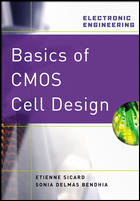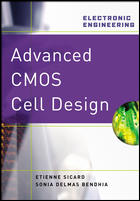Now MICROWIND users can refer the following books published using MICROWIND tools. These books are written by developers of software and extensively covers the CMOS design issues. The books illustrates and explain most of the CMOS design circuits and every example is included in the setup package.

A book about design of CMOS integrated circuits in deep submicron technologies, based on MICROWIND and DSCH has been written by Etienne Sicard and Sonia Bendhia. The book is the international edition of the book that first appeared in June 2005 at Tata-McGraw-Hill, India.
The international edition of the book appeared in November 2006 at McGraw-Hill, USA, ISBN: 007148839, DOI:10.1036/0071488391
Inside this book:
MOS Devices and Technology • MOS Modeling • The Inverter • Interconnects • Basic Gates • Arithmetics • Sequential Cell Design • Analog Cells • Appendices: Design Rules; Microwind Program Operation and Commands; Design Logic Editor Operation and Commands; Quick Reference Sheets

The 2nd book about design of CMOS integrated circuits in deep submicron technologies deals with advanced concepts: microprocessor, embedded memories, RF cells, converters; FPGAs, packaging, SOI and future./p>
The book appeared at McGraw-Hill professional series, November 2006, ISBN: 0071488367, DOI:10.1036/0071488367/p>
Inside this book
• Deep-Submicron to Nanoscale Technologies • SRAM, DRAM, EEPROM, and Flash • Design of a Simple Microprocessor • Configurable Logic Circuits • Radio Frequency (RF) Circuit Design • Data Converters • Input/Output • Silicon on Insulator (SOI) Technologies • Impact of Nanotechnologies • Design Rules • Quick-Reference Sheets

The text is organized around first introducing the global view of digital integrated circuit design, VLSI and design automation, and then sequentially developing the topics from the materials and devices level, up through the circuits and then system level. This mirrors the structural hierarchy of the chip design field itself. While building a solid foundation and reference for the chip design, it integrates the discussion with hands-on examples of the design automation software, included in the book, to illustrate not only the layout and simulation concepts, but also how an industry designer would put them into practice. Both theory and application are effectively integrated into a cohesive treatment of the subject and art of chip design.
See the web page of John Uyemura's book on CEngage Learning using ISBN search 9780534466299